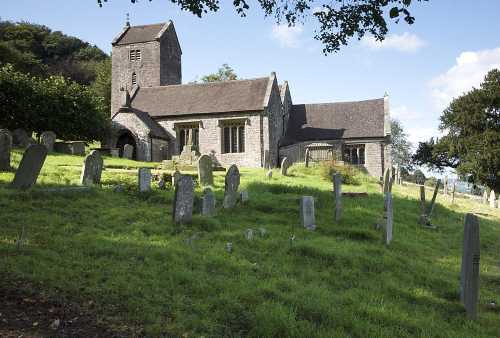R. J. Mansfield wrote in The Gloucester Citizen in 1968 – under the rather odd title Perusal of Penallt – as follows:
We are all so accustomed to think that “The Royal Forest of Dean” and “West Gloucestershire” are alternative names for the same tract of land, and that to the east of the River Wye lies England while to its west is Wales, or at least the debatable county of Monmouth, that we lose sight of an interesting fact.
That is that according to its natural formation the Dean is only a part of the plateau which rises from Severnside and runs westward until it drops into the Golden Valley and the plain of Gwent from the heights of The Doward, Penallt, Cwmcarvan Hill, Llanishen, Devauden and Chepstow Park, and that this plateau is a natural feature which is slashed by the gorge of the Wye.
Although the whole of the plateau is not covered with timber the Forestry Commission recognises the fact of its unity and the Dean National Forest Park includes beside the Forest proper, the Highmeadow Woods and Tidenham Chase on the east, while to the west of the Wye there is Lord’s Wood and Tintern Forest from Fedw Fawr to the Wyndcliff, including Trelleck Beacon which rises to mountain height, and the little extension of ‘Chepstow Park’ wood extending to a thousand acres.
Nowhere is this fact so obvious as when we stand in Penallt and look eastwards across the Wye to see the outskirts of Coleford almost at our feet. But very few people do this. Even if they realise that they can go from Chepstow to Monmouth over the hills instead of through the Wye Valley, they miss Penallt entirely for it is a place which you must go to rather than one you naturally pass through.

The road from St. Arvans through Trelleck to Monmouth runs almost along a ridge, and affords glorious views of Wales as well as being the connection between Monmouth and Tintern before the valley road was made. But Penallt lies off that road over the steep descent to the Wye which travellers used to cross by one of the ferries at Redbrook and even take their horses over.
The old parish church at the end of a lane occupies a wonderfully picturesque position. It is on the edge of a steep slope 600 feet above the Wye, and from its churchyard magnificent views down the valley may be obtained.
Penallt is still something of a backwater, but it is a backwater well worth exploring if one takes the trouble to turn off the main road which skirts the western boundary at either Red Wern or the Pecking Stone.
Landscape
In December 1986, the Parish Newsletter reviewed a book, Divine Landscapes by Ronald Blythe, who also wrote Akenfield, a famous village history, and we quoted:
“… we all live in an ancient gazeteer of prayer and worship … there is scarcely a field or a hill, let alone a village or a town which cannot be read in both spiritual and material terms … the architecture of a village church or chapel … the pattern of streets and fields … and the agriculture and industrial activities which have been determined by the local ecology are the home section of a divine cosmos.”
[from: Penallt – A Village Miscellany]